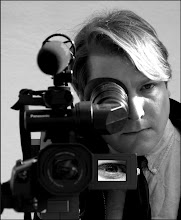
LUND--Since Leitz listened to me so well about the design of the M8, minus a few details of course, but pretty much exactly what I asked for (other than them sending me one or two free ones and some lenses) I have decided to tell them how to design another camera.
My first digital camera, bought in 2002 shortly after returning from Honduras, was their Digilux 1. For those unfamiliar with the Digilux 1, it is a 4 megapixel camera with a relatively large and fast variable f2-2.5 Leica Vario-Summicron lens. In many ways it is a large and glorified point and shoot. It is roughly the same size and shape as the old American made Argus C3 (in other words shaped like a brick). This, in itself, is ironic as the C3 was an inexpensive rangefinder that Argus sold zillions of to people who couldn't afford Leicas! The styling of the Digilux 1 is determinedly retro and people are always surprised to discover it is, in fact, a digital machine. What sets the D1 (as I will call it from now on, but not to be confused with Nikon's SLR of the same designation) apart are several things. For a P&S it is very fast. There is a very short lag time between pushing the button and the picture being taken. It is stunningly, almost creepily quiet. It has a built in flash as well as a hot-shoe. Covering the large and sharp back screen is a removable hood and the whole thing is well and solidly built. It won't fit in anything but a large pocket but it is meant more as a working camera, big enough to hold steady and able to hang around the neck above or below (as you see fit to work) your film M6 (or M3, MP, M7 or whatever). And for being a mere 4 megapixels it produces beautiful pictures that kick the crap out of most but the most recent P&S cameras. The pictures are far better than the general crop of pocket sized snappers even though they brag 8, 10 and even more million pixels. Still, all that being said, 4 is really not quite enough in the end. Were this camera to have 6 I would be almost completely happy with it. Still, it is the digital I am going to take with me to Ukraine along with my M6ttl loaded with black and white film. Since I am going there with the primary purpose of making a movie I think these two will do fine indeed for the stills.
But this brings me to what Leica needs to do--are you listening you horde of lens-polishing Huns? You über-machinist Boche? Efficient and meticulous Kraut bastards? Don't make me come over there and get all 8th Air Force on your lederhosen-wearing butts.
What we need is a very, very fine P&S. It is OK for it to be a bit on the large size, we need to be able to hold onto it. It should be shaped like the M series cameras, perhaps the size of, or even a little bigger than the Canon G9. It should be made of metal. And it should be ALL BLACK with no shiny areas except one cool little red dot. Or, for those who like it as such, come in a traditional black and silver body AS WELL. Its lens should retract into the body, leaving the camera at least basically flat on both sides, a short, protruding flange protecting the lens is OK, however. The camera should come in a zoom-lens model (about 28-135mm) as well as in fixed 50mm and 35mm models with correspondingly better and faster optics. It should have a built in flash as well as a hot-shoe and the controls should be simple. It should shoot in RAW, have a larger sensor than a normal P&S, and have a finely-tuned black and white mode with the ability to set it to shoot both color and black and white simultaneously just as many cameras will shoot RAW and JPEG at the same time. It should be around 10 megapixel and, if you can do it, have dual card slots. There, that's pretty much it. If you have any questions get in touch. Don't make me get all up and Patton in your face.








